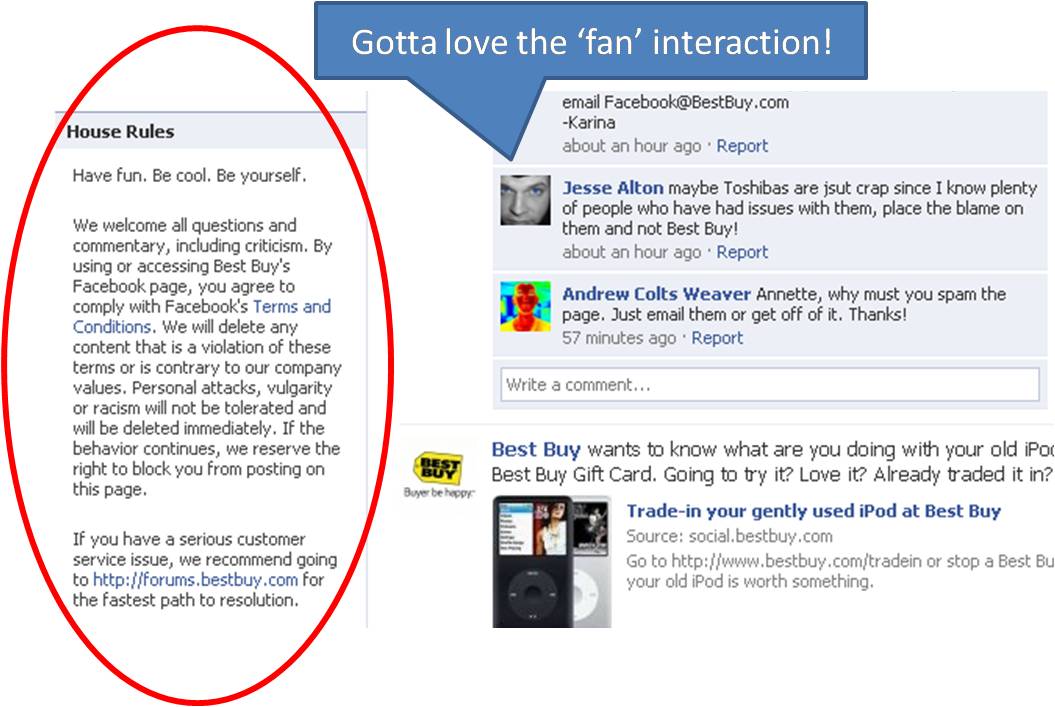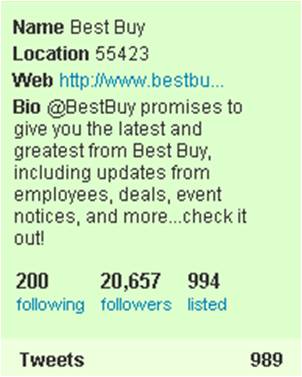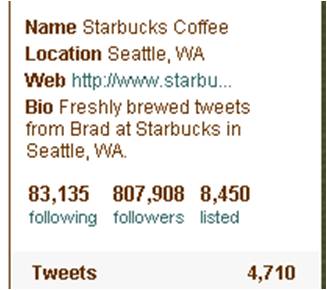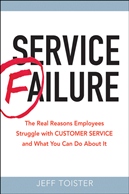State your purpose when using social media
 Jeff Toister
Jeff Toister  Friday, March 19, 2010 at 10:07AM |
Friday, March 19, 2010 at 10:07AM | The most basic definition of customer service is how well you meet your customer’s expectations. If you meet their expectations, that's good. If you fall short of their expectations, that's bad. If you exceed their expectations, that's great.
Telling your customers up front what they can expect from you is a great way to avoid disappointments and misunderstandings. That’s why I can’t figure out why so few companies in my social media experiment are clear about why they are using Facebook and Twitter.
Facebook was a total strikeout. Nobody in my experiment explicitly states “here’s what you can expect from us on Facebook”. Best Buy comes the closest with a set of ‘House Rules’ that you have to scroll down the page to find:

Twitter is a little better. Here you can see the difference between Best Buy (clear purpose) and Starbucks (some guy named “Brad”):


As always, your comments and suggestions are very much appreciated!
 Best Buy,
Best Buy,  Facebook,
Facebook,  Starbucks,
Starbucks,  social media experiment,
social media experiment,  twitter | in
twitter | in  Service Trends
Service Trends 



Reader Comments (4)
Jeff,
Good observations in your post – I hope to see more posts on this topic. We need perspectives from the customer side as companies still debate how to best manage and use social media.
Your post is a great example of two very distinct uses. Best Buy’s presence is corporate and is very clear about the “expectations” it has of usage (note the reference to policy). Starbucks has allowed an employee, Brad, to tweet on behalf of Starbucks. Brad is likely to have very little oversight, though this varies from company to company, and I am not acquainted with Starbucks social media employee policies. In most instances, companies provide only guidelines. The ideas is that employees will build brand loyalty and promote the brand on a personal level that connects to their readers.
Thanks for the comment, Maria! I'll start revealing the rest of the companies in my experiment next week and highlight four social media strategies I've now discovered.
Hey Jeff,
I'm the lead on Best Buy's Facebook presence. Thanks for the kind words. I suspect that many companies are fretting about what their "facebook strategy" is instead of sticking with a bit of common sense as a starter. Either that or it's simply too scary or new for them to undertake. We still feel like we need to do some more work and have some ideas in the hopper that you'll start to see evidence of in the coming months.
I'll be interested to see the rest of your results.
Cheers,
Josh
Thanks for checking in, Josh! I've been really impressed with Best Buy's social media efforts so far. Since I'm approaching this from a customer's perspective, my goal was to get better service and I definitely did with Best Buy. I'll be sure to send you a copy of the completed report.
~Jeff